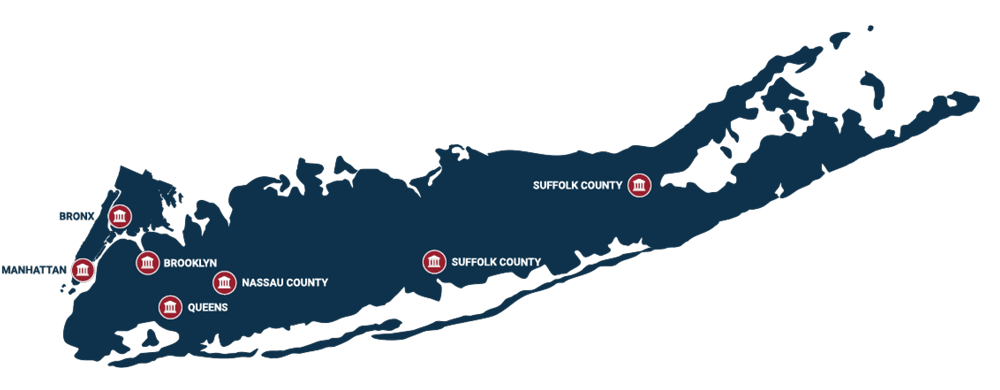In mid September, approximately 30 practitioners, several Justices and Court personnel participated in the inaugural training session for the Suffolk County’s Commercial Division Mediation Program. The training, which consisted of 24 hours over three days, was presented by Simeon Baum, Esq. and Stephen Hochman, Esq., conducted at the Suffolk County Bar Association, and provided an examination of mediation principles and techniques. The Program provided participants with an opportunity to “explore the differences between facilitative and evaluative or directive approaches in mediation, both from a practical and ethical perspective [and discussed] the advantages and disadvantages of these styles, [all the while permitting the participants to] focus on experimental learning through role plays and dialogue to help prepare [the participant] for the real world of commercial mediation.” ((Suffolk County Commercial Division Mediation Training Manual, An Overview of the Course, at 2.)) To supplement the lecture and program material, the training session was enhanced by a hands-on participation wherein each attendant, whether attorney, Justice or Court personnel, assumed the role of a Mediator, a plaintiff, a defendant and their respective counsel, at one of the role-playing sessions, thereby providing the opportunity to hone the recently acquired theory and skills. The program will be followed early next year with an additional 16 hours of Commercial Division topic specific training.
The Mediation Program
The Mediation Program was a natural corollary of the increasing caseload for the Suffolk Commercial Division, which Program has been present in other counties for quite some time. According to the official Program Overview:
Alternative Dispute Resolution (“ADR”) refers to a variety of processes other than litigation that parties use to resolve disputes. ADR offers the possibility of a settlement that is achieved sooner, at less expense, and with less inconvenience and acrimony than would be the case in the normal course of litigation. The principal forms of ADR include arbitration, neutral evaluation and mediation. The Suffolk County Commercial Division will initially focus upon mediation.
Highlights of the Program
In light of the Program’s goal, which is to find a mutually acceptable alternative to having a trial Justice make a determination after trial or hearing, cases may participate in the Program either upon request of the parties or at the Referring Justices’ discretion. The Administrative Judge maintains a panel of Mediators for the Mediation Program in accordance with Part 146 of the Rules of the Chief Administrative Judge.
At the Mediation session (which must be completed within 30 days of the date that the Order of Reference was issued, and can be as short as a few hours or as long as several sessions) ((Suffolk County Supreme Court Commercial Division Mediation Program, at II.)) all parties will have the opportunity to raise issues of concern and the Mediator will assist the parties to work collaboratively to develop and choose options which address the pertinent issues at bar. The Program Rules explicitly provide that the Mediator will not offer an opinion as to the likely Court outcome of any particular issue, and that the Mediator will not impose a solution on the parties or attempt to tell them what to do.
The hallmark of the Mediation Program is confidentiality, which permeates the proceedings. More specifically, while involved in a caucus, wherein a Mediator may meet separately with each party, the Program Rules mandate that the Mediator will not divulge any information discussed in the caucus without first obtaining a party’s permission to do so. Also, subject to very limited exceptions, all communications made during the course of the mediation, by any Party, Mediator or any other person present, shall not be disclosed (this includes documentation and information generated in or around the mediation, i.e., memoranda), with the expected caveat that the mediation confidentialty may not be used as a shield with respect to otherwise discoverable documentation and information. As for ongoing discovery, an Order of Reference from the Court to the Mediation Program does not stay court proceedings unless otherwise directed by the Justice; in the event of a Court-directed stay, the Referring Justice may nonetheless Order an informal exchange of information concerning the case if the same will enhance the mediation process. In the event that the parties do not reach a settlement during Mediation, the parties return to the Referring Justice.
According to Kathryn Coward, the Principal Court Attorney for the Suffolk County Commercial Division, the Program is already underway and several cases have participated in the Program. Ms. Coward reports that once counsel have been advised that the Program exists, the attorneys in the Commercial Division have been very responsive to the opportunities presented and an attorney’s role as conduit between the Court and the client will be the most valuable resource for encouraging participation.
In certain respects, the mediation process is the antithesis of counsel’s role in a standard litigation; yet, after 24 hours of training, the benefits of a successful mediation were patent: the parties were empowered to achieve a confidential, cost-effective and party-tailored resolution. Although not all cases will initially be ripe for mediation, many cases will be ripe for mediation at one time or another.
